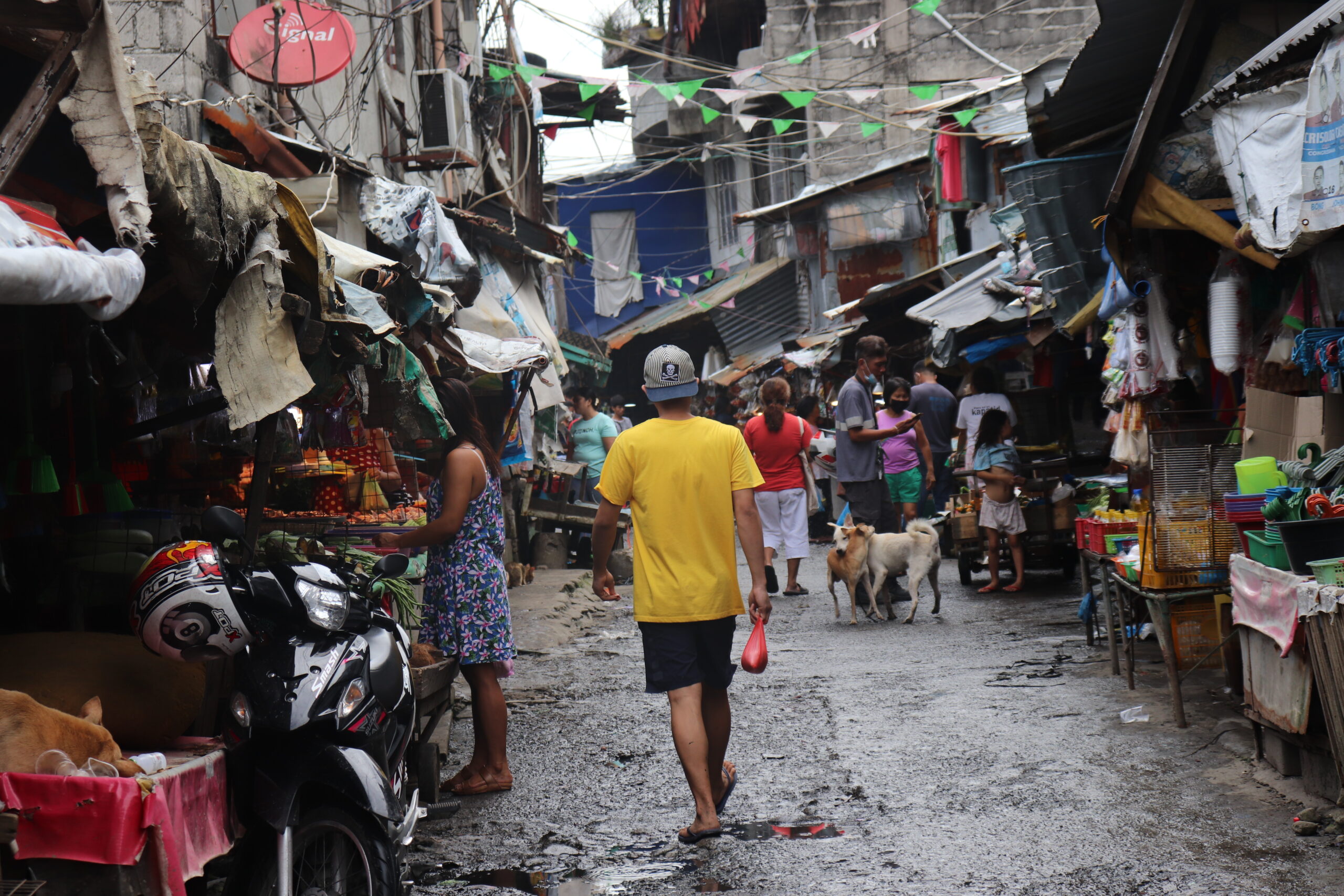In the North Triangle district of Quezon City, state-backed property developers and slum dwellers are engaged in a tug-of-war for land.
As the sun rises, security personnel hired by the developers patrol the entrance of Sitio San Roque, one of the largest informal settlements of metropolitan Manila. As construction of a new business district pushes forward, the privately employed guards enforce a housing restriction in the enclave, surveilling incoming residents to confiscate construction materials that may be used to build or renovate informal shelters.
Many locals have already left for government-selected relocation areas. Others are standing their ground.
“In exchange for money, they will demolish their homes. Others were paid but they decided to stay and rent a house instead,” said Fe Seduco, a resident of Sitio San Roque’s Area J, one of the six sections that make up the 37-hectare settlement. “Sometimes there are threats. Someone would say that your home in the resettlement area will disappear if you don’t go to the housing project.”
Quezon City is going through an overhaul, and urban poor residents such as Seduco are on the verge of being squeezed out. She and the 6,000 remaining families of Sitio San Roque – down from a peak of about 17,000 – have been fighting eviction notices and demolition orders for more than a decade. But as powerful developers partnered with the government ratchet up pressure to leave, the urban poor community is fighting for more inclusive development with the help of outside advocates.
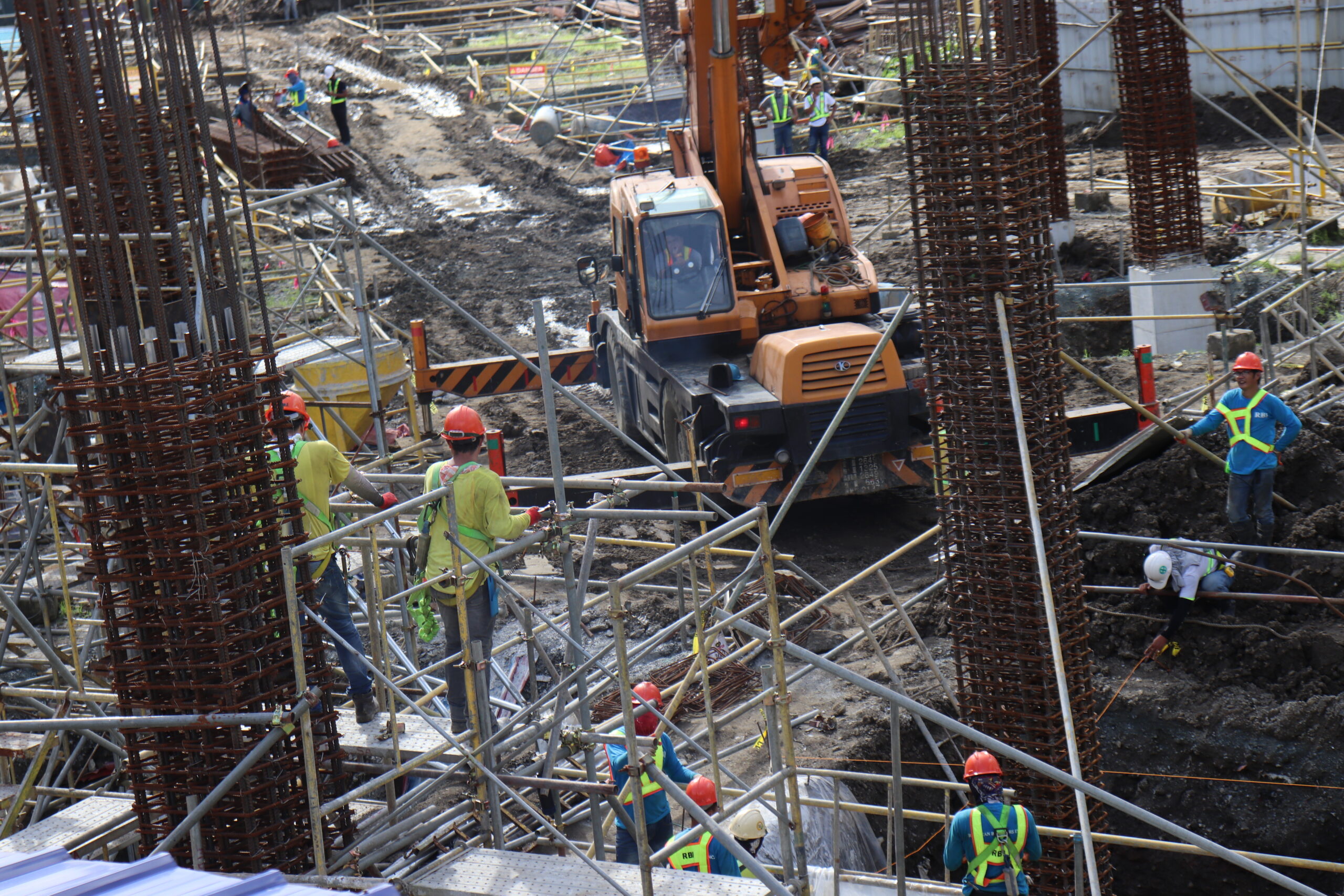
Perched on the edge of Manila, Quezon City was originally established in 1939 as a planned capital to replace its overcrowded neighbour. That scheme fell through by 1976. Since then, it has swelled to become the most populous city in the Philippines, even as it continues to absorb new residents from rural areas seeking opportunity in the shadows of the urban landscape.
The redevelopment now chipping away at Sitio San Roque began in 2007, when former President Gloria Macapagal Arroyo signed an executive order greenlighting the construction of the Quezon City Business District (QCBD), a major reimagining of the downtown area.
The president’s order cleared the way for a flurry of development plans on land managed by the National Housing Authority (NHA), the state agency responsible for public housing.
These plans include Vertis North, a mixed-use project unveiled in 2012 as a joint venture between the NHA and real estate giant Ayala Land Inc (ALI). Reported to cost $1.5 billion, the development includes shopping malls, commercial spaces and residential towers, all either finished or under construction on land controlled by the NHA that was formerly part of Sitio San Roque.
Some of the company’s real estate portfolio, its shopping mall and hotel, are now operational. Others, such as the One Vertis North Plaza, a 43-storey corporate tower, are scheduled to rise in 2024, while ALI hopes Vertis North will be entirely completed by 2027.
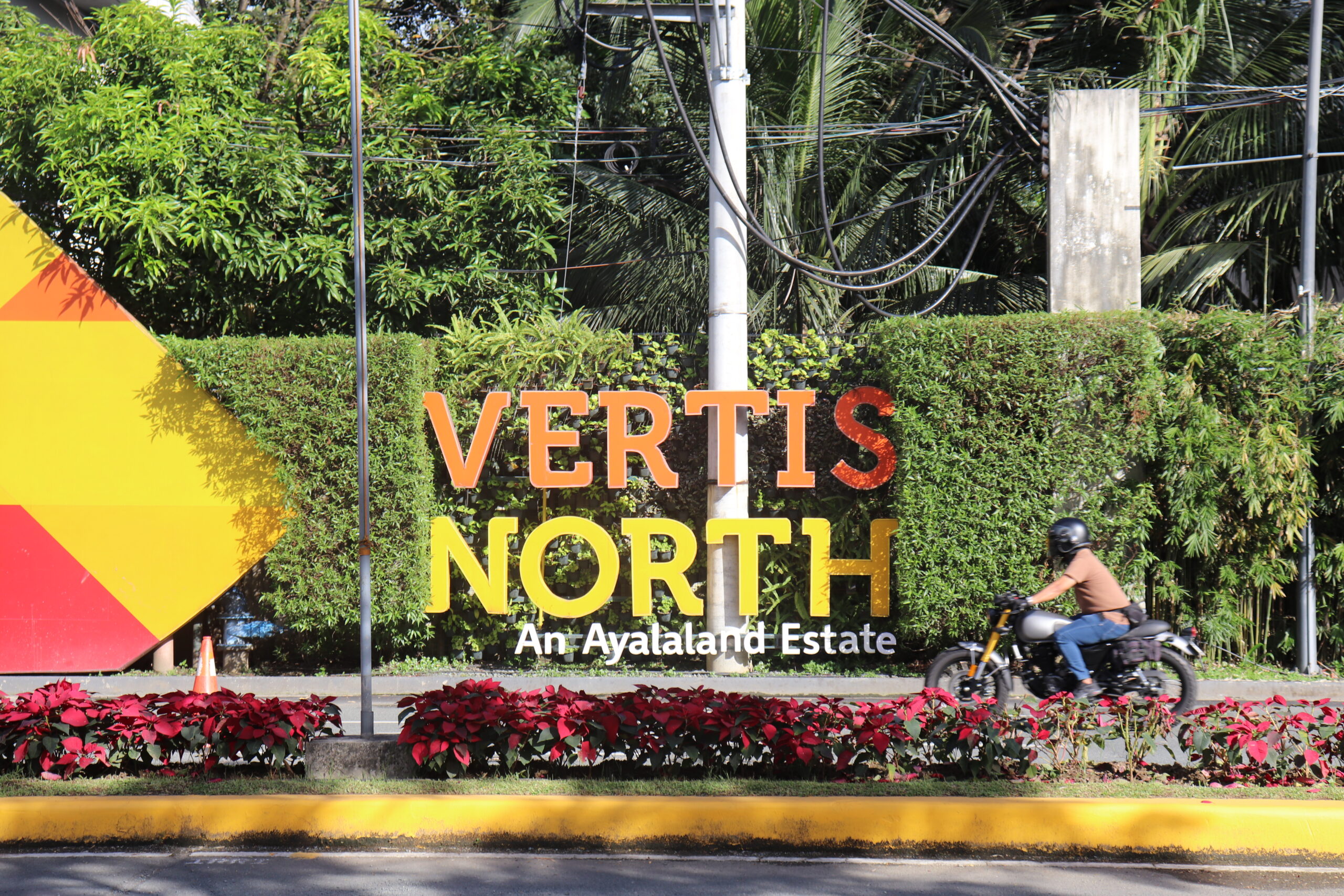
Emmanuel Lagamson, an area coordinator of the Quezon City Housing Community Development and Resettlement Department, stressed the economic benefits of development, saying the new construction has produced jobs.
While the projects have affected people in the area, Lagamson said the ALI-NHA partnership and the city government is making good on pledges to find relocation sites for displaced residents.
“While there are affected families, the NHA and the Ayala with the help of the local government built a committee to find possible relocation for the people. Their needs will also be sustained,” Lagamson said.
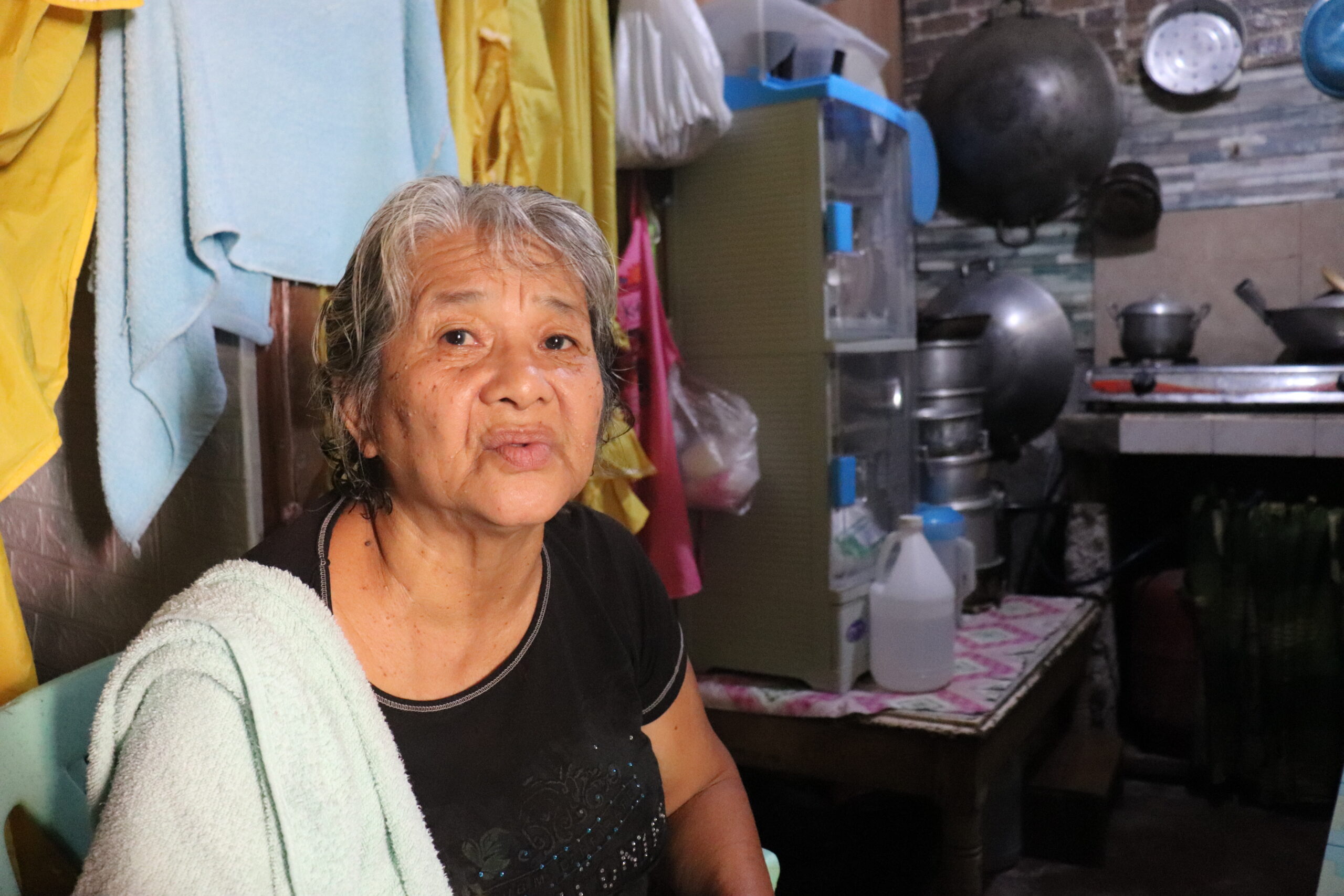
Pushing for community-based development
But not everyone can benefit from the resettlement program.
Only those counted in a census between 2009-17 will qualify for a state housing project. And while residents are promised at least $600 in total cash assistance, they will still have to pay for their new homes.
Relocation sites also vary. Some would place residents in a different part of Quezon City, while others are in surrounding provinces. Residents are concerned this would place them far from the economic and social benefits of living in the city centre.
“For us, San Roque is the heart of the city,” Seduco said. “Work is located here. Public services like hospitals, schools and transport are just nearby.”
Marilou Palpagan and her husband Joseph are among the residents expecting to obtain a housing unit in a resettlement area. But the couple feels the move is like a walk on a tightrope.
They’ve already spiralled into debt to send their child to college, and now they worry their finances – coming mostly from Joseph’s minimum-wage job as a construction worker – will fail to keep them afloat should they relocate.
“Our income is not enough. We are borrowing money so we can eat. Recently our ATM card has been pawned,” Marilou said. “My child’s tuition fee is expensive. We still have to pay our water and electricity bills. We acquire loans and pay them with whatever is left on our wages. Then we borrow again.”
Seduco’s fate is different. Disqualified to avail of socialised homes due to the census condition, she may find herself homeless. Adamant to stay in the community, she also declined the money offered as compensation for soon-to-be evicted residents.
Instead, Seduco and other residents have turned to activism, pushing for an on-site development plan that would provide new, affordable housing for Sitio San Roque.
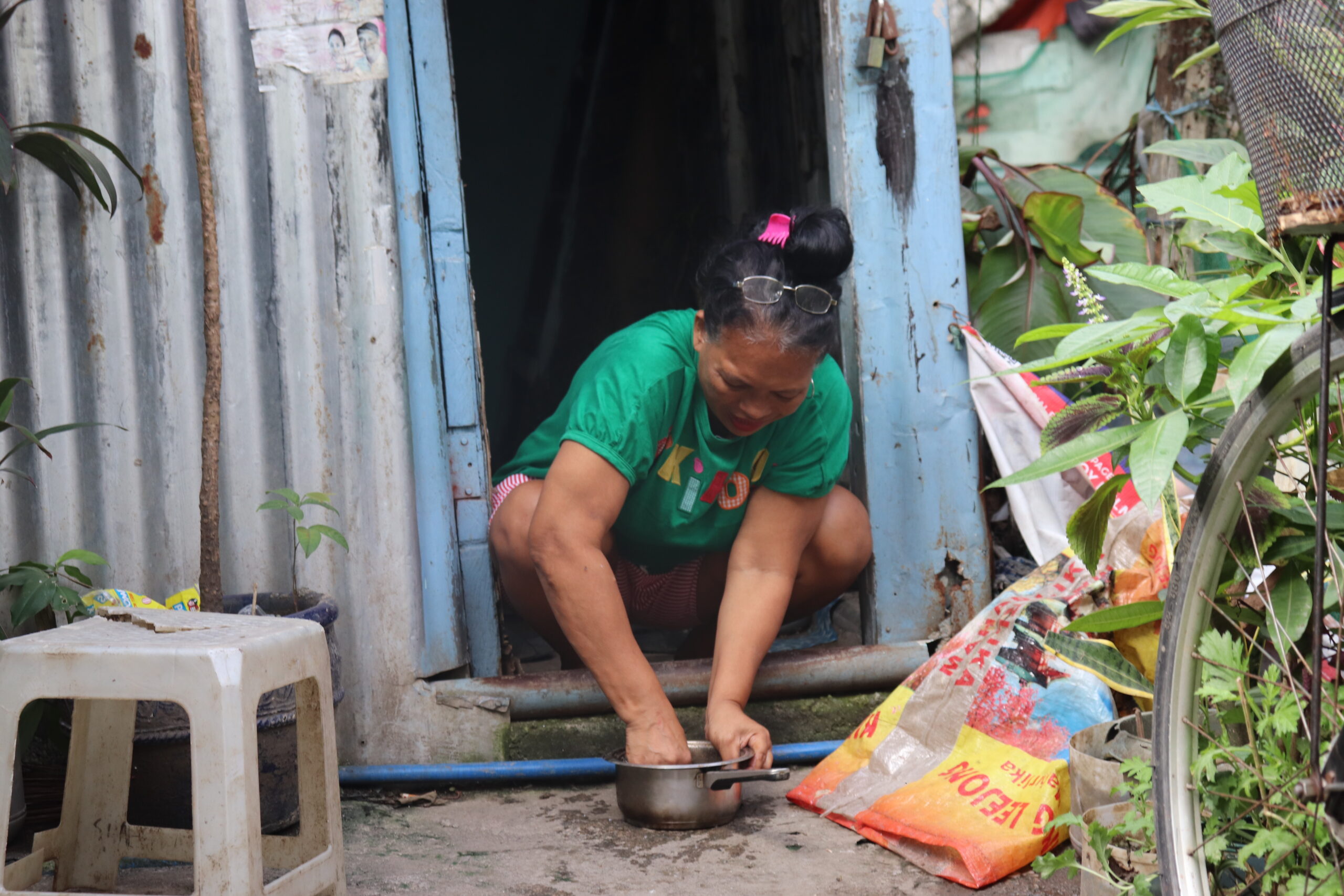
Known officially as the Community Development Program (CDP), the plan was first introduced in 2019 by Save San Roque, an alliance of volunteer architects, activists and students. The group also coordinated with the urban poor advocacy organisation KADAMAY to create the program.
Based on its design plan, a section of the district will be utilised to set up a vertical housing project. Seven medium-rise buildings each with 120 residential units would shape a new neighbourhood. SSR has also asked the state to aid relocatees by providing income-based subsidies from the national budget.
Backers of the programme say it reflects the will of the locals to participate in redevelopment as much as their determination to stay put.
“Sitio San Roque was burned nine times in the past. But our resolve is firm. We did not tremble,” said resident Estrelieta Bagasbas. “We refuse to leave and move to relocation houses in faraway places.”
Better known by her nickname Ka Inday, the 67-year-old is the vice-chairwoman of KADAMAY.
So far, the CDP is a focal point in the table-talk dialogues initiated by the disputing parties. Since the proposal was launched in 2019, Quezon City Mayor Joy Belmonte vowed to find a “win-win” solution to the conflict. This was followed by another display of support in 2021 when she assured community members that they will benefit from in-city housing programs.
But in September, SSR posted on its Facebook page that there were no “substantial steps” enacted by the local government for the community programme to materialise. Still, SSR and KADAMAY continue to call on government officials to act on their proposals.
For now, residents continue to trickle out, even as the most committed push for negotiations with the city government. So far, they’ve managed to halt the signing of a demolition compliance certificate by the local housing board, staving off another round of evictions.

Prime real estate
Named after a saint Catholics prayed to in times of plague, Sitio San Roque was once a grassy area with few inhabitants. In the late 1980s when the dictatorship of former President Ferdinand Marcos was toppled, thousands of newcomers seeking new lives made their homes in the area.
Today, major roads border Vertis North, and a train station nearby ensures that one of their flagship malls will be visible to visiting consumers and residents of its new condominiums.
The poverty of Sitio San Roque belies a clear economic reality: The land underneath the residents’ makeshift dwellings is a very hot commodity in expanding Quezon City.
Another major developer, Bloomberry Resorts, has also secured a $43.27 million property in the area from the NHA through its hotel and resort unit. Their project, a hotel and casino facility called Solaire North, is slated to open by the fourth quarter of 2023.
Both companies are owned by some of the most influential tycoons in the Philippines. ALI and its parent company, Ayala Corporation, are controlled by the Zobel de Ayala family. Bloomberry Resorts, meanwhile, is managed by port baron Enrique Razon Jr.
Forbes’ annual profile of the wealthiest people in the Philippines listed Razon as the third richest while the Zobel de Ayala family ranked eighth.
But even if the residents are facing powerful elites, they are still keen to preserve their community through protests and alternative development schemes like the CDP.
Such a demonstration of dissent is nothing new. On the morning of 23 September 2010, violence erupted in Sitio San Roque. A firetruck fired water cannons. The police and eviction team equipped with anti-riot gear swarmed the enclave. Glass bottles and stones, hurled in a crossfire between residents and demolition forces, rained from the sky.
Archived media reports stated that around 300 officers, including Special Weapons and Tactics personnel, were deployed by the Philippine National Police. Meanwhile, the demolition team hired by the NHA numbered about 600.
Refusing to vacate Sitio San Roque, protesters erected a barricade around the settlement. It took a temporary restraining order issued by a local court against the eviction to stop the conflict.
Today in Sitio San Roque, life goes on even under restrictions. Locals maintain a wet market where shoppers haggle over essentials. There’s a daycare centre that provides education to children, and a mosque to accommodate the Muslim population in their prayers.
Ka Inday, who was at the protests in 2010, sees continued resistance as the only way to save what’s left of this community.
“A human only has one life. If you die, you’ve run out of luck. But if you live, you still have a long way to go to fight for your right to housing,” she said. “It’s not just about me but also to the people finding hope in the struggle.”
Photos by Tristan James Biglete for Southeast Asia Globe.
